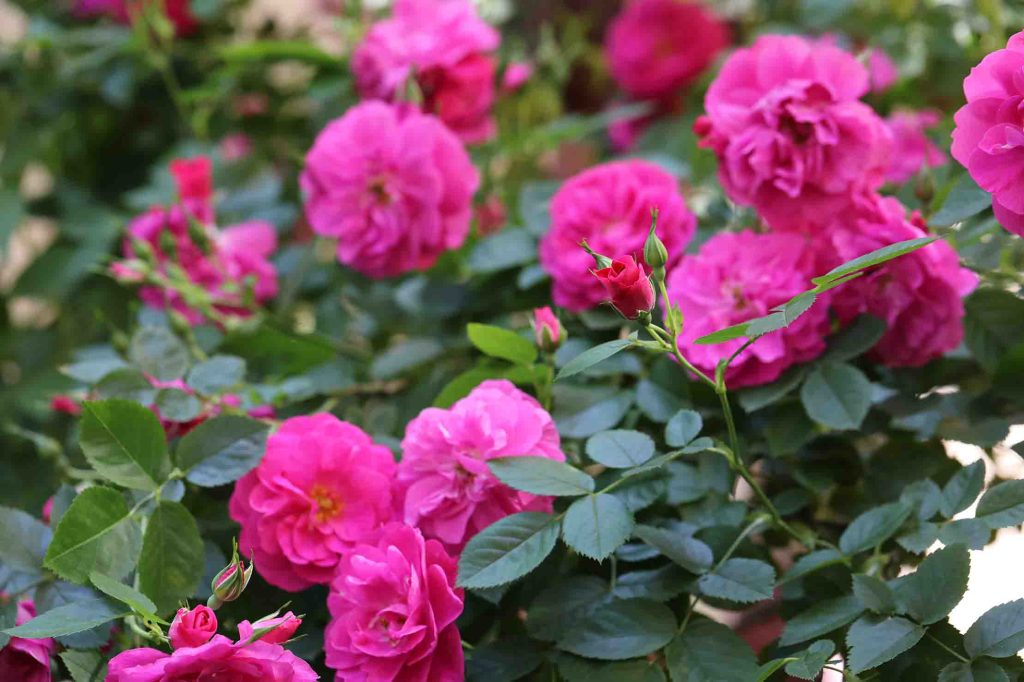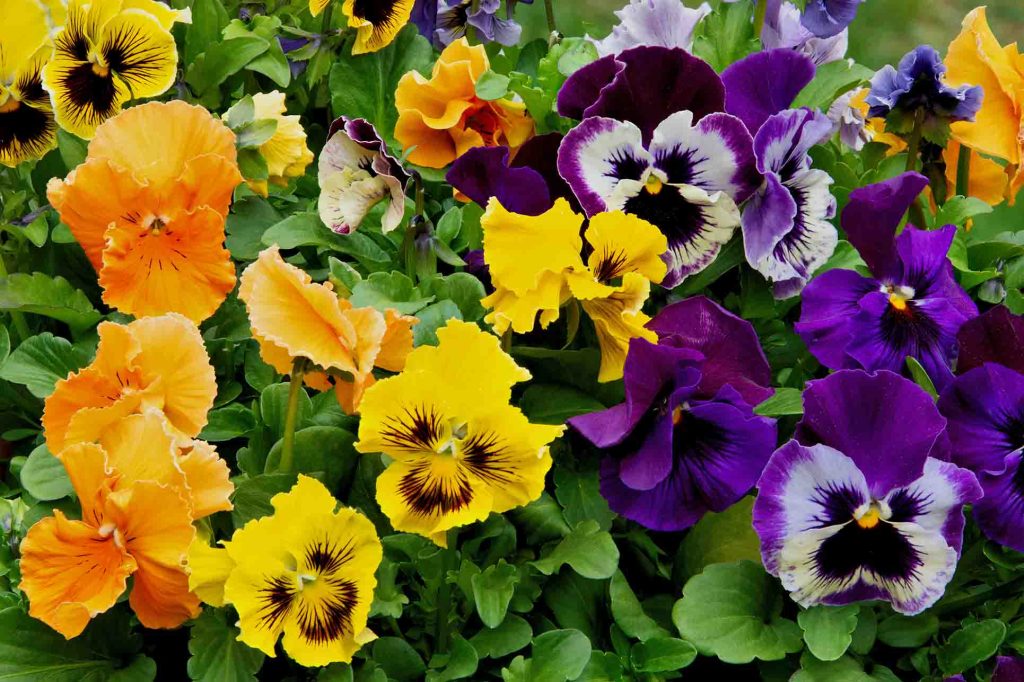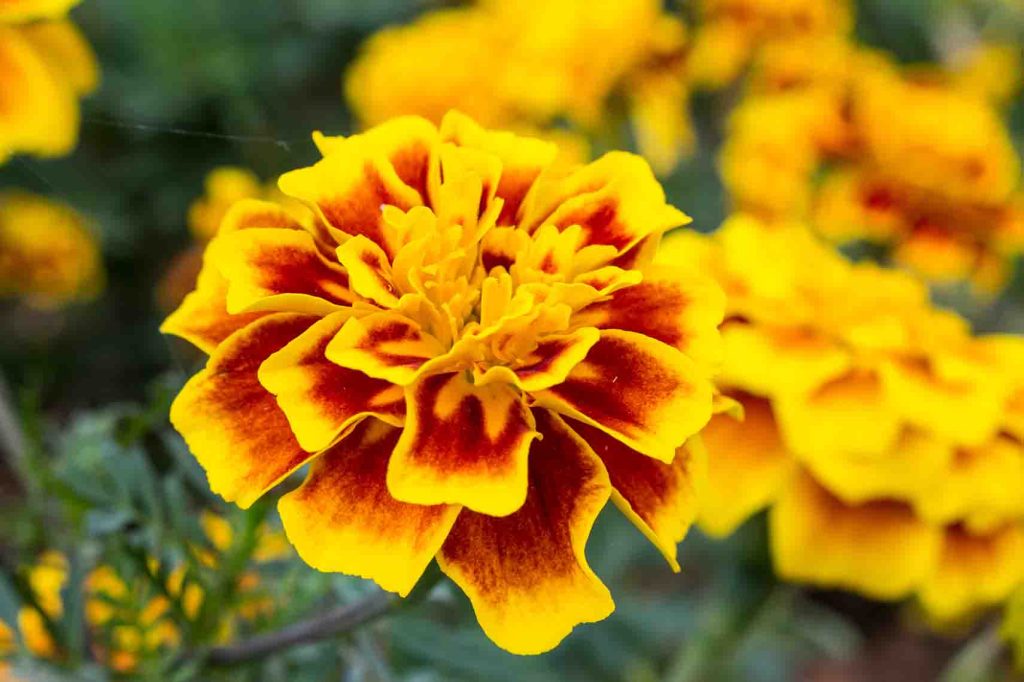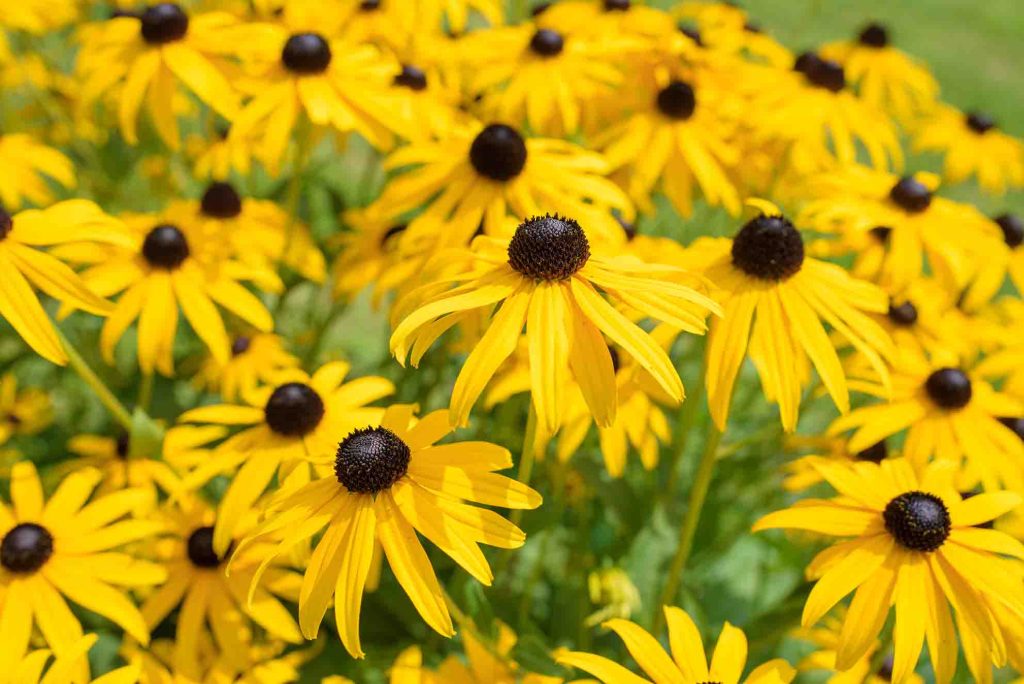
If you’re looking for some inspiration for your Utah flower bed, look no further! The experts at Tuxedo Yard Care wanted to suggest some of the best and most low-maintenance flowers to plant in your garden, so we have compiled this list for readers to consider.
These flowers all have their own unique qualities that make them a great addition to any garden. Whether you’re just starting out in the garden or you’re looking to add some new varieties to your collection, read on for some great ideas!
1) John Cabot Roses

These unique perennial flowers have risen in popularity over the years, with many people appreciating their unique appearance for a rose. They typically bloom in shades of pink and white, with some also having yellow or peach tones. They’re a great option for adding some color to your flower bed, and they’re also known for being quite drought tolerant, which is perfect for the Utah climate.
These flowers were developed in Canada in an attempt to make a more cold-tolerant plant that could survive the harsh Canadian winters, making it the perfect choice for flower beds across Utah. If left to grow undisturbed, John Cabot roses can grow up to 8 feet tall and be used as a shrub or hedge. Of course, regular garden maintenance will keep them the perfect size for your garden.
Key Characteristics:
- Perennial
- Pink, white, or peach petals
- Requires full sunlight
- Drought & cold tolerant
2) Daylilies

Daylilies are a popular choice for flower beds in Utah, and for good reason! With their vibrant colors and large blooms, they’re sure to add some beauty to any garden. They come in a wide variety of colors, including yellow, orange, red, pink, and purple, so you’re sure to find one that matches your color scheme.
What’s also great about daylilies is that they’re quite versatile. They can be used as a ground cover or as a focal point in your flower bed. Additionally, they’re drought tolerant and can survive in a variety of climates, making them the perfect choice for Utah gardens.
Key Characteristics:
- Perennial
- Vibrant colors including yellow, orange, red, pink, and purple
- Can be used as ground cover or focal point
- Drought tolerant
3) Pansies

Pansies are another great option for adding color to your flower bed. They come in a variety of colors, including yellow, blue, purple, and white. They’re a great choice for beds that get full sun, as they need at least 6 hours of sunlight each day to thrive. Pansies are also one of the first flowers to bloom in the springtime, so they’re perfect for getting a head start on your gardening season.
Pansies are a member of the Viola genus, which contains over 500 different species. They’re thought to be native to Europe and Asia, although they’re now grown all over the world. Pansies were first introduced to North America in the early 1800s and have been a popular choice for gardens ever since.
Key Characteristics:
- Annual or short-lived perennial
- Available in a wide range of colors
- Prefers full sunlight
- Blooms early in the springtime
4) Chrysanthemums

Chrysanthemums, also known as mums, are another great choice for your flower bed. These fall flowers come in a variety of colors, including white, yellow, pink, and purple. They typically bloom in the late summer or early fall, making them a great way to extend the flowering season in your garden. Mums are also known for being quite easy to care for, so they’re perfect for beginner gardeners.
The chrysanthemum is native to Asia and has been cultivated there for centuries. It was first introduced to Europe in the 17th century and quickly became a popular choice for gardens. Today, chrysanthemums are grown all over the world and are a staple of fall gardens and autumn décor in general. They are most appreciated for their ability to transfer from indoor pots to outdoor gardens.
Key Characteristics:
- Perennial
- Many different colors and varieties
- Cold tolerant
- Blooms in late summer or early fall
5) Marigolds

Marigolds are another great option for adding color to your garden. These annual flowers come in a variety of colors, including yellow, orange, and red. The leaves of the plant are serrated and strongly fragranced. They typically bloom in the late spring or early summer, making them a great addition to any garden. Marigolds are also known for being quite easy to care for, so they’re perfect for beginner gardeners.
The marigold is native to Latin America and was first introduced to Europe in the 16th century, though there are also French and African varieties. It quickly became a popular choice for gardens due to its ability to thrive in a wide range of climates. Marigolds are grown all over the world and are a staple of many summer gardens.
Key Characteristics:
- Annual
- Available in a wide range of colors
- Prefers full sunlight
- Highly heat tolerant
6) Petunias

Petunias are another great choice for adding color to your garden. The delicate petals of this flower can be many colors, including white, pink, purple, and red. They typically bloom in the late spring or early summer, making them a great addition to any garden. Petunias are a great low-maintenance option for gardeners.
The petunia is native to South America and was first introduced to Europe and the rest of the world in the 18th century. It quickly became a popular choice for gardens due to its ability to thrive in a wide range of climates. Petunias are grown everywhere in many summer gardens.
Key Characteristics:
- Annual
- Delicate, colorful petals
- Prefers full sunlight
- Blooms in late spring or early summer
7) Coneflowers

Coneflowers are another great choice for adding color to your garden. These perennial flowers come in a variety of colors, including white, pink, purple, and red. They bloom in the late spring or early summer. Coneflowers are notable for their large, cone-shaped center of seeds, known as a “disk.” They’re a great low-maintenance option for gardeners.
The coneflower is native to North America and was first introduced to Europe in the 18th century. It quickly became a popular choice for gardens due to its ability to thrive in a wide range of climates. Coneflowers are a hardy plant that are naturally acclimated to the Utah climate.
Key Characteristics:
- Perennial
- Available in a wide range of colors
- Prefers full sunlight
- Blooms in late spring or early summer
8) Black-Eyed Susans

Black-eyed Susans are another great choice for adding color to your garden. These annual flowers come in a variety of colors, including white, yellow, and brown. They typically bloom in the late spring or early summer. These flowers belong to the same family as coneflowers (Asteraceae), and they are often mistaken for coneflowers because they feature a very similar seed disk in the center of the petals.
The black-eyed Susan is native to North America, just like coneflowers. The biggest difference between this flower and coneflowers is that black-eyed Susans do not come back every year like perennials do. Both flower types grow roughly 3 feet tall and are easy to maintain in Utah gardens.
Key Characteristics:
- Annual
- Available in a wide range of colors
- Prefers full sunlight
- Blooms in late spring or early summer



